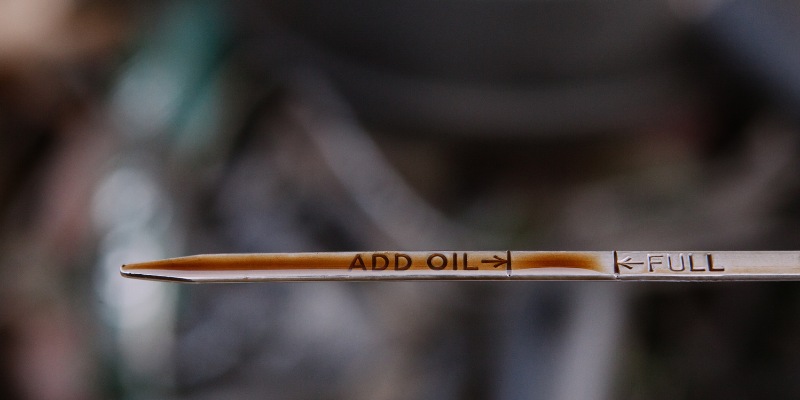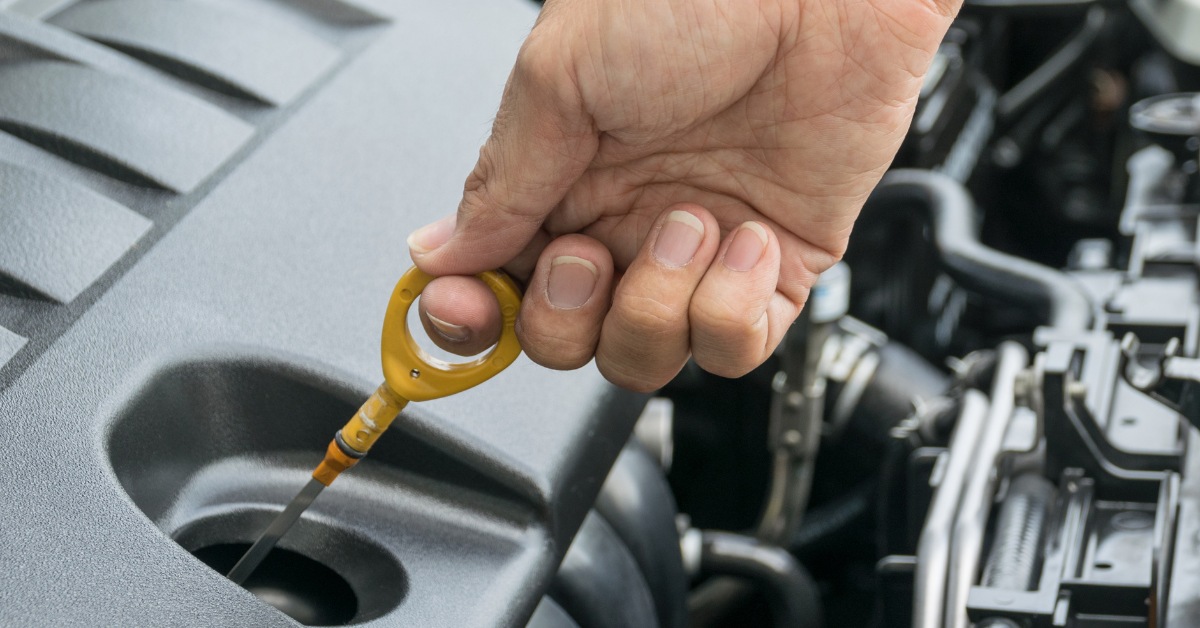How Much Oil Should Be On The Dipstick
Maintaining the correct oil level in your vehicle is paramount for its smooth operation and longevity. The dipstick is a vital tool that aids in ensuring the right amount of oil in the engine. Here, we delve into the intricacies of reading a dipstick and understanding how much oil should ideally be on it.
The dipstick typically has markings or holes indicating the acceptable range of oil levels. The lower marking denotes the minimum oil level, while the upper marking represents the maximum or full level. When you pull out the dipstick, the oil should ideally reach the upper marking, indicating a full oil level.
It’s advisable to check the oil level when the engine is cold. A cold engine provides a more accurate reading as the oil has had time to settle. When the engine is cold, the oil should be on the dipstick’s full mark. If it falls below this mark, you’ll need to add oil until it reaches the full mark.
The difference between the minimum and maximum notches on the dipstick typically represents about a liter of oil. This measure can guide you on how much oil you need to add if the level is low. For instance, if the oil mark is at the minimum level, you must add about a liter of oil. If it’s halfway between the minimum and maximum marks, you’ll likely need to add about half a liter of oil.



If the oil doesn’t reach inside the markings or holes on the dipstick, it’s time to top up. Adding at least one quart of oil is advisable if the dipstick is showing a level below the minimum mark. It’s crucial not to delay topping up the oil, as running the engine with insufficient oil can lead to severe engine issues.
How to Read Dipstick Oil Levels (with Step-by-Step Guide)
- Park on Level Ground: Ensure your vehicle is parked on level ground to get an accurate reading.
- Wait for a Cold Engine: It’s best to check the oil level when the engine is cold, allowing the oil to settle at the bottom of the engine.
- Remove and Clean the Dipstick: Remove and wipe it with a lint-free rag or paper towel to ensure an accurate reading.
- Re-insert the Dipstick: Place it back into its tube, ensuring it’s fully seated, then pull it out again.
- Read the Level: Look at where the oil reaches on the dipstick. The oil should be between the minimum and maximum marks, ideally at the maximum or full mark.
- Check the Oil Color: While checking the level, also note the oil color. Fresh oil is amber, but it darkens over time. Extremely dark or dirty oil indicates it’s time for an oil change.
- Top Up if Necessary: If the oil level is below the maximum mark, add oil gradually, checking the level on the dipstick frequently to prevent overfilling. Remember, the gap between the minimum and maximum marks usually represents about a liter of oil.
Why You Need to Check Oil Level
Regularly checking the oil level in your vehicle is crucial for several reasons:
- Oil is the lifeblood of your engine, providing the necessary lubrication to prevent friction between moving parts, which could lead to severe engine damage.
- Maintaining the correct oil level ensures optimal engine performance and fuel efficiency.
- Routine oil checks can help identify leaks or excessive oil consumption, enabling timely intervention to prevent more significant problems.
Detecting a Low Oil Level
A low oil level is often indicated by the oil not reaching the upper marking on the dipstick. When the oil level is below the lower marking or doesn’t reach inside the markings or holes on the dipstick, it’s a clear sign that you need to add oil.
Additionally, modern vehicles are equipped with an oil warning light on the dashboard that illuminates when the oil level is low or if there’s a drop in oil pressure. Addressing a low oil level immediately is advisable to prevent potential engine damage.
What If the Oil Level Is Too High?
An oil level that exceeds the maximum mark on the dipstick is also a cause for concern. Overfilled oil can lead to excessive pressure within the engine, causing oil leaks or damaging seals and gaskets. Furthermore, the crankshaft can whip the oil into a foam, resulting in inadequate lubrication and potential engine damage.
If you find that the oil level is too high, it’s advisable to drain the excess oil or have a professional do it for you.
How Often Should You Check Your Oil Level?
The frequency at which you should check your oil level can vary based on several factors, including the age and condition of your vehicle, the driving you do, and the vehicle manufacturer’s recommendations. However, here are some general guidelines:
Newer Vehicles
Monthly Checks: For newer vehicles, checking the oil level once a month is a good rule of thumb. Newer models tend to have less oil consumption. They may also have electronic oil monitors, reducing the need for frequent checks.
Older Vehicles or Vehicles with Known Oil Consumption Issues
Bi-weekly or Weekly Checks: Older vehicles or those known to consume or leak oil should be checked more frequently. Every two weeks or even weekly checks may be necessary to prevent low oil levels that could damage the engine.
Vehicles Without an Oil Monitoring System
Before Long Trips: It’s wise to check the oil level before embarking on a long trip to ensure the engine is well-lubricated for the journey ahead.
Regular Service Intervals: The oil level should be checked and topped up at every service interval as necessary.
Following the recommendations in your vehicle’s owner’s manual is always a good idea. The manual will often have tailored advice on how often to check the oil based on the make and model of your vehicle.
If you frequently drive in severe conditions such as extremely hot or cold temperatures, dusty or dirty environments, or do a lot of stop-and-go driving or towing, more frequent oil checks are advisable.
Following Manufacturer Recommendations
The specifics regarding the optimal oil level can vary slightly based on your vehicle’s make and model. Therefore, consulting your car’s owner’s manual is prudent to ensure you maintain the correct oil level.
Conclusion
Understanding how to read the dipstick and maintain the correct oil level is fundamental to vehicle maintenance. A well-lubricated engine is pivotal for your vehicle’s smooth operation and longevity. By keeping an eye on the dipstick and ensuring your engine has the right amount of oil, you are taking a significant step towards keeping your vehicle in prime condition.

